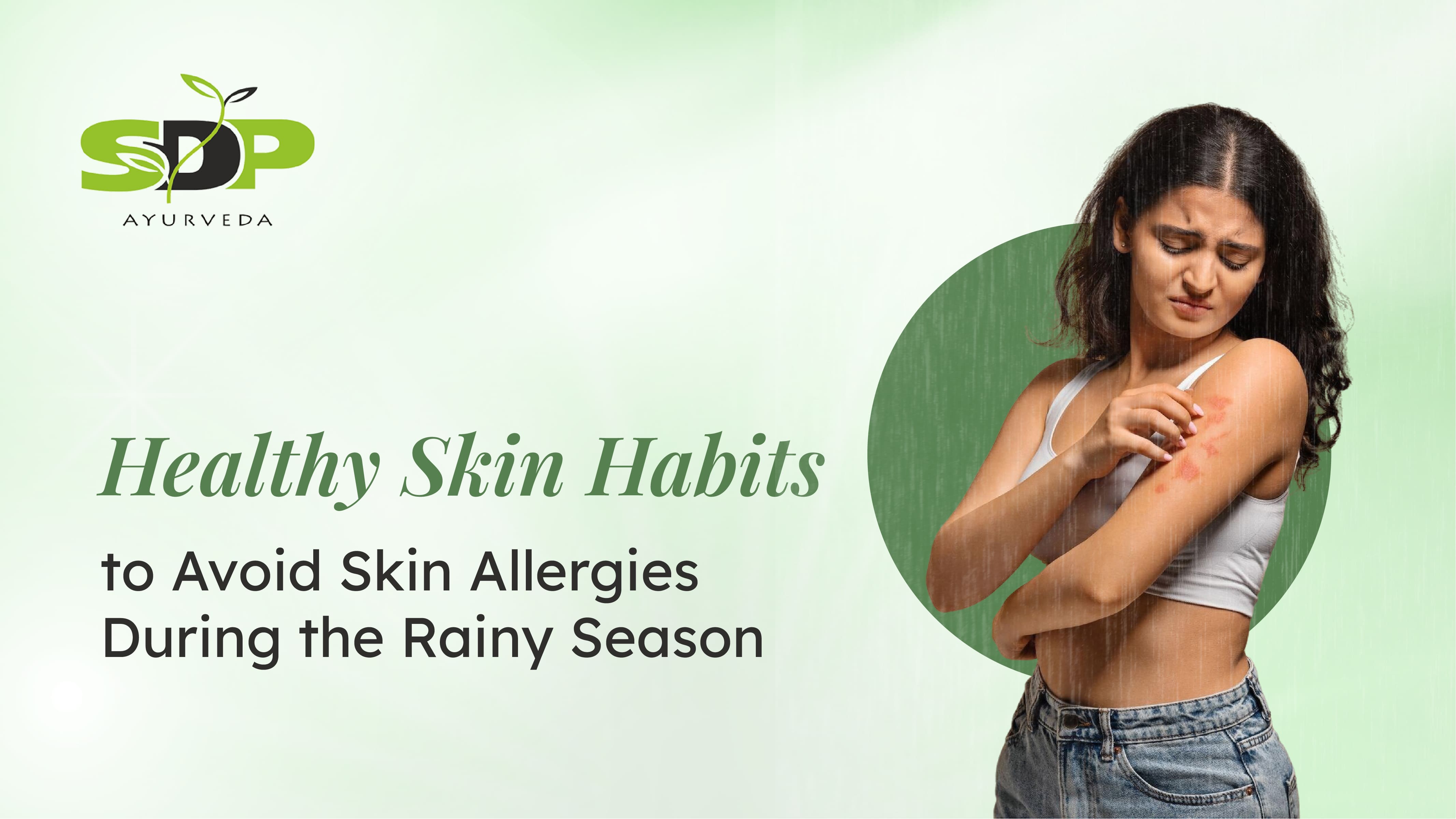The rainy season is a refreshing break from the heat—cool breezes, green views, and soothing showers. But for many, it also brings an uncomfortable side effect: rainy season allergies.
If your skin starts acting up as soon as the clouds roll in, you’re not alone. From itchiness to rashes, monsoon skin allergies and seasonal skin problems are more common than you think. Let’s understand why this happens and how to handle it without losing your cool.
Why Does the Rainy Season Trigger Skin Allergies?
The rainy season feels nice and cool, but it also brings problems for your skin. Wet weather, sticky air, and sudden changes in temperature can make your skin itchy and uncomfortable.
Here’s why it happens:
- Too Much Moisture
The air stays wet, which helps mould and fungus grow. These are common reasons for rainy season allergies and fungal skin infections. - Wet Clothes and Rainwater
Getting wet in the rain or staying in damp clothes can damage your skin’s natural layer. This makes it easier for skin problems to start. - More Allergens Around
Things like pollen, mould, and dust mites increase during the rainy season. These can lead to monsoon skin allergy and rashes. - Sweat Stays on the Skin
Sweat mixed with humidity can trap dirt and germs on your skin. This can cause itching, red patches, or even eczema flare-ups.
Common Allergic Skin Conditions in the Monsoon
Rainy days may seem calming, but for your skin, they often bring a hidden storm. With all the moisture in the air, wet clothes, and sticky weather, it’s easy for minor skin issues to turn into uncomfortable, itchy problems. Many people don’t even realize that what feels like a small rash or irritation could actually be a sign of a larger issue caused by rainy season allergies.
The monsoon creates the perfect environment for bacteria, fungi, and allergens to thrive, making your skin more vulnerable than usual. If you’ve ever noticed red patches, constant itching, or unusual skin reactions during this season, you’re likely dealing with a monsoon skin allergy or another type of seasonal skin problem.
Let’s take a closer look at the most common skin conditions that tend to show up during the rainy season—and how you can spot them early.
Tips to Manage Rainy Season Allergies and Keep Your Skin Healthy
1. Stay Dry and Clean
- Change Out of Wet Clothes Immediately: soppy clothes are a attraction for fungal skin infections. Dry off thoroughly and slip into clean, dry clothes as soon as possible.
- Shower After Getting Wet: Wash off rainwater, sweat, and allergens to help prevent irritation. Use a mild, fragrance-free cleanser to avoid stripping your skin’s natural oils.
- Pat Dry, Don’t Rub: Rubbing wet skin can cause micro-tears, making it easier for monsoon skin allergies to take hold.
2. Use Soothing Ointments
For irritated or itchy skin during the rainy season, try a natural remedy like Bavanchi Ointment. Made with Ayurvedic herbs like Bakuchi and Indrajava, it helps soothe inflammation, relieve itching, and treat minor fungal infections. Its gentle, herbal formula is ideal for calming monsoon-related skin allergies without harsh chemicals. Regular use can help prevent flare-ups and support faster skin healing, especially in areas prone to humidity and friction.
3. Keep Your Skin Moisturized
- Humidity might make your skin feel damp, but it can still get dehydrated. Use a lightweight, non-comedogenic moisturiser to lock in hydration without clogging pores.
- For eczema-prone skin, opt for a thicker cream with constituents like ceramides or hyaluronic acid to strengthen your skin barrier against rainy season allergies.
4. Watch Out for Fungal Infections
- Dry Between Toes and Folds: Fungal skin infections love warm, moist areas. Use talc-free powder in areas prone to sweating, like your feet or groin.
- Wear Breathable Fabrics: Cotton or moisture-wicking fabrics help keep your skin dry and reduce the risk of seasonal skin problems.
- Antifungal Creams: If you notice signs of a fungal skin infection, like itching or scaling, use an over-the-counter antifungal cream and consult a dermatologist if it persists.
5. Avoid Allergens
- Wash Bedding Regularly: Dust mites thrive in humid conditions, triggering rainy season allergies. Wash your sheets and pillowcases in hot water weekly.
- Steer Clear of Mold: Check your home for mold growth in damp corners and use a dehumidifier if needed to keep monsoon skin allergies at bay.
6. Boost Your Skin’s Defences
- Eat an Anti-Inflammatory Diet: Foods rich in omega-3s (like fish or flaxseed) and antioxidants (like berries) can help reduce inflammation caused by seasonal skin problems.
- Stay Hydrated: Drinking plenty of water helps your skin flush out toxins and stay resilient against rainy season allergies.
Conclusion
The rainy season doesn’t have to mean endless itching or unsightly rashes. By understanding the triggers of rainy season allergies, staying proactive with skincare, and catching monsoon skin allergies or fungal skin infections early, you can enjoy the beauty of the monsoon without the discomfort. Keep your skin dry, clean, and moisturised, and don’t hesitate to seek professional help if seasonal skin problems persist.
Got your own monsoon skin woes or tips? Share them in the comments—I’d love to hear how you keep rainy season allergies under control!




